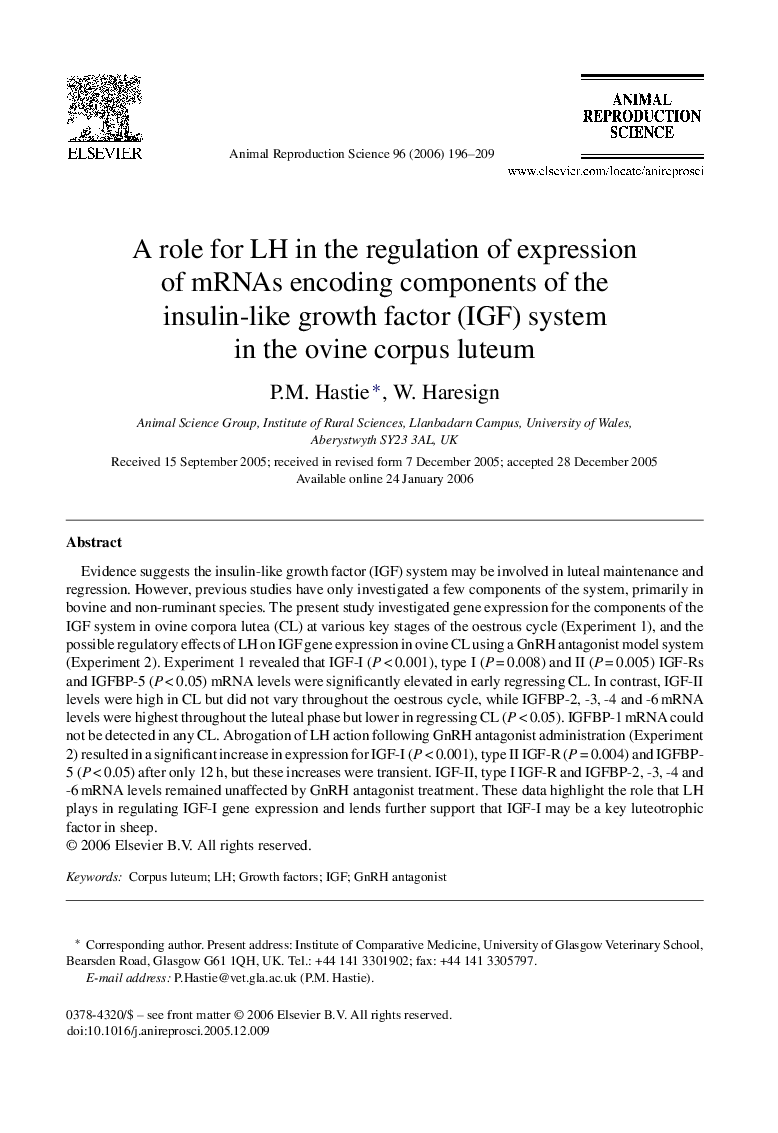| Article ID | Journal | Published Year | Pages | File Type |
|---|---|---|---|---|
| 2075043 | Animal Reproduction Science | 2006 | 14 Pages |
Evidence suggests the insulin-like growth factor (IGF) system may be involved in luteal maintenance and regression. However, previous studies have only investigated a few components of the system, primarily in bovine and non-ruminant species. The present study investigated gene expression for the components of the IGF system in ovine corpora lutea (CL) at various key stages of the oestrous cycle (Experiment 1), and the possible regulatory effects of LH on IGF gene expression in ovine CL using a GnRH antagonist model system (Experiment 2). Experiment 1 revealed that IGF-I (P < 0.001), type I (P = 0.008) and II (P = 0.005) IGF-Rs and IGFBP-5 (P < 0.05) mRNA levels were significantly elevated in early regressing CL. In contrast, IGF-II levels were high in CL but did not vary throughout the oestrous cycle, while IGFBP-2, -3, -4 and -6 mRNA levels were highest throughout the luteal phase but lower in regressing CL (P < 0.05). IGFBP-1 mRNA could not be detected in any CL. Abrogation of LH action following GnRH antagonist administration (Experiment 2) resulted in a significant increase in expression for IGF-I (P < 0.001), type II IGF-R (P = 0.004) and IGFBP-5 (P < 0.05) after only 12 h, but these increases were transient. IGF-II, type I IGF-R and IGFBP-2, -3, -4 and -6 mRNA levels remained unaffected by GnRH antagonist treatment. These data highlight the role that LH plays in regulating IGF-I gene expression and lends further support that IGF-I may be a key luteotrophic factor in sheep.
